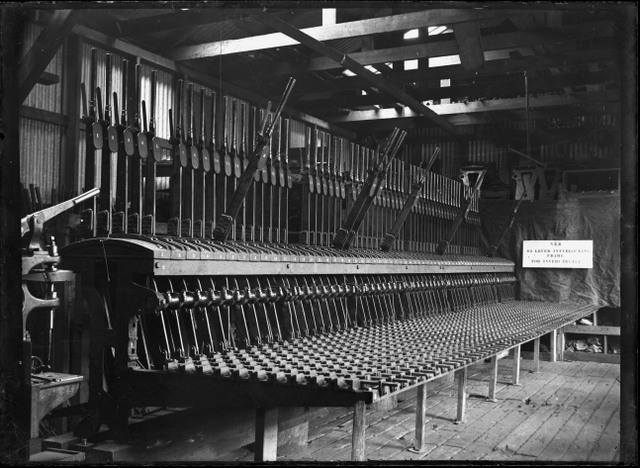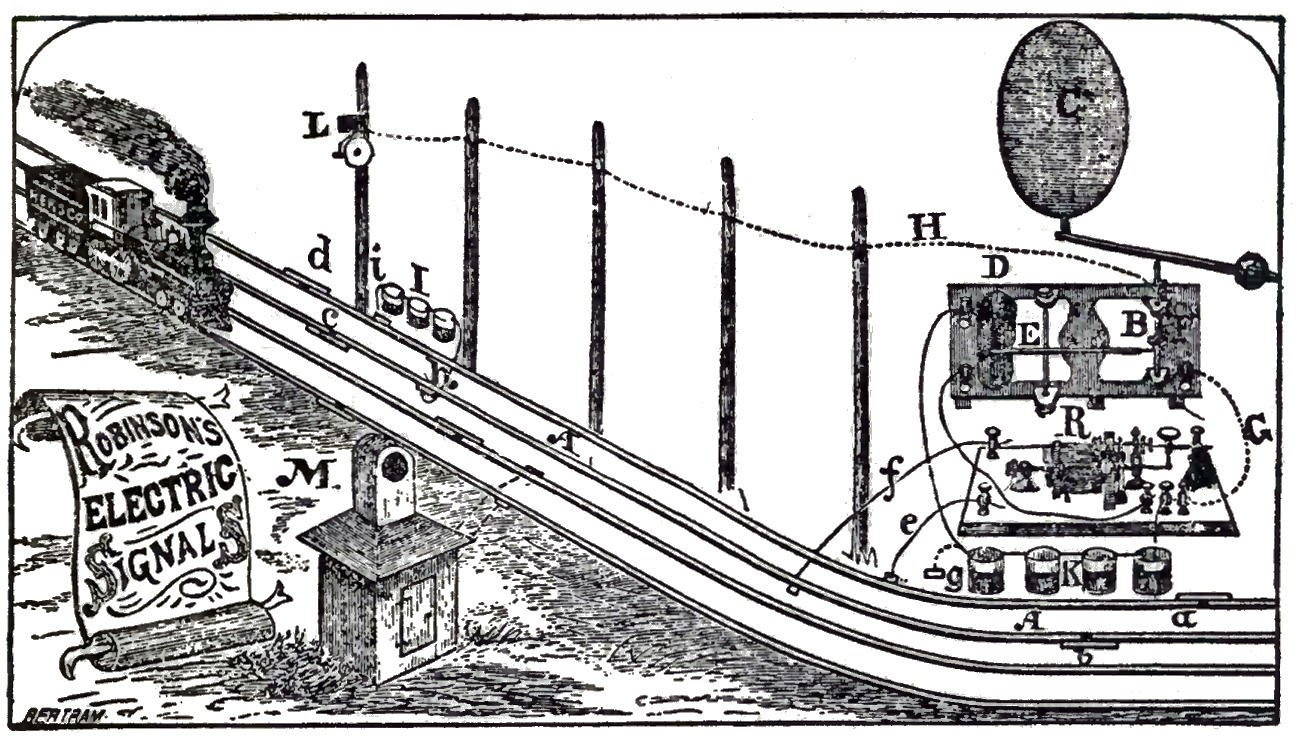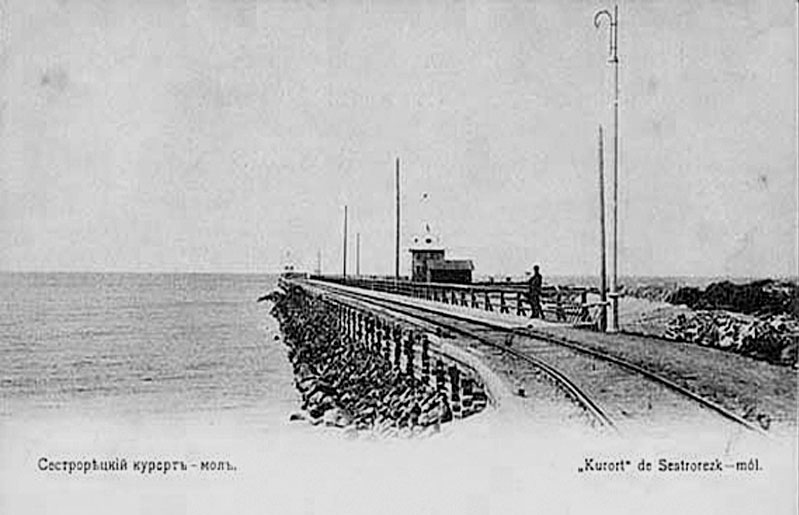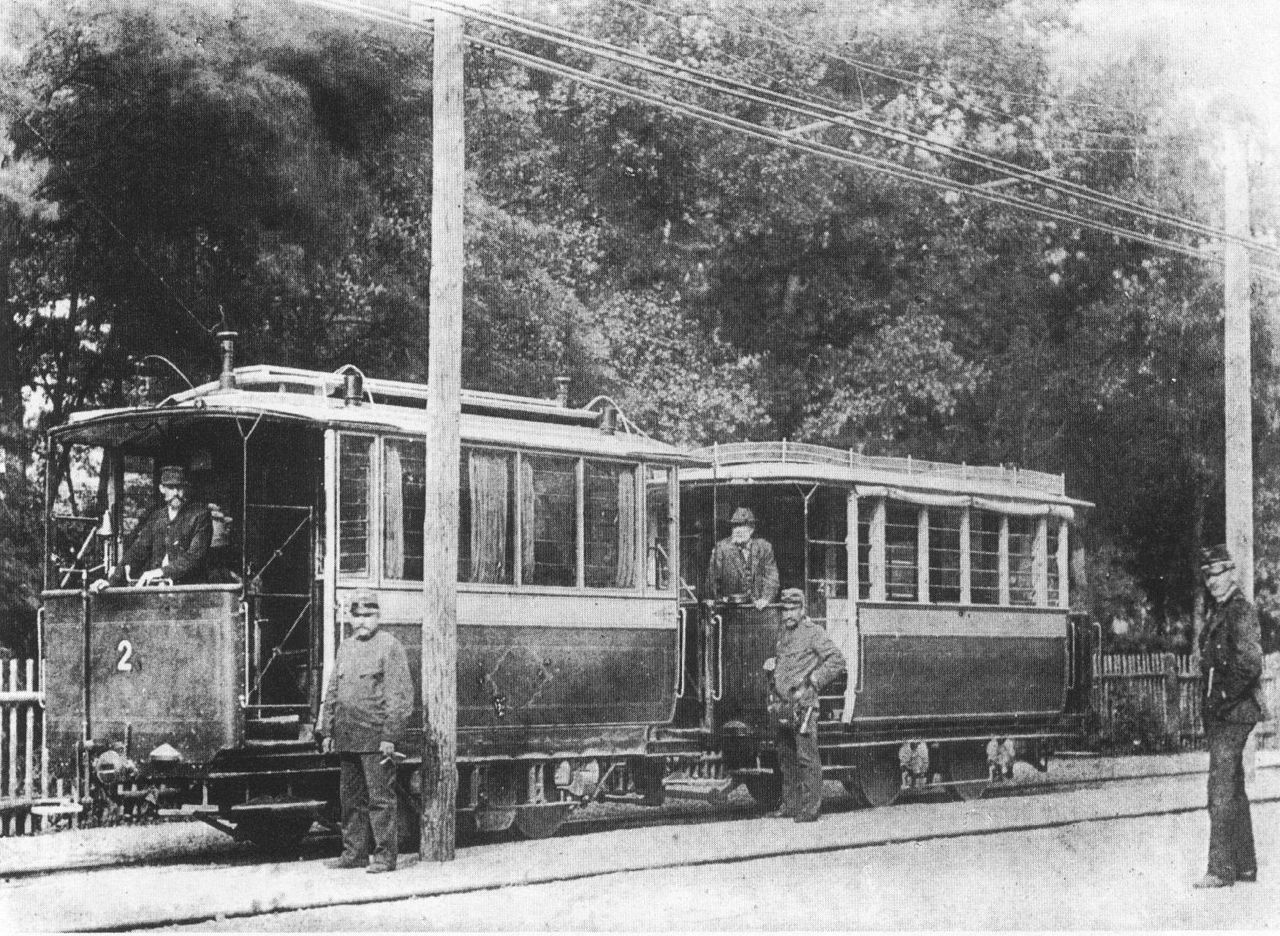Rail Innovation Timeline – 1800s
January 11, 2022
Viper Innovations’ CableGuardian system is one of the latest in a long line of achievements in railway technology targeted at improving the safety of the railway for the public and workforce and increasing the efficient operation of the railway-at-large. To celebrate these past innovations and all things to do with the improvement of safety and efficiency, we researched some key points in time that moved the railway forward. This piece covers those during the 1800s, from John Birkinshaw’s Wrought Iron Rails in 1820 to Ernst Werner von Siemens’s First Overhead Line Electrified Railway in 1883. Click to read our later rail timeline article which focuses on the 1900s; outlining notable innovations during this periods.
The 1800s
The 1800’s saw the birth of the railway, with the UK leading the way building on the industrial revolution to create traction power. The spark came initially from moving goods and bulk materials faster, longer distances and with greater regularity to feed industry. A number of innovations combined to give the railway its life and one innovation bred another with multiple incremental changes in safety and efficiency across the 19th Century, enabling the UK to develop a whole operational transport system across the globe. There are so many spin-off innovations that the railway stimulated, such as the need for a common time reference to synchronise network stations. The railways were the reason that GMT was used as the standard time for the whole UK and the telegraph was the underlying technology used for synchronisation, the railway was the catalyst that moved the world away from the sundial. If you’re wondering why some civic building clocks have two minute hands, it’s because some locals would not convert to railway time and instead kept one reference to local time and one to railway time!
1820 – Wrought Iron Rails – John Birkinshaw
The introduction of processes that developed the new material of Wrought Iron allowed the move from strap rails and fishbelly rails of cast iron that were dangerous, short and brittle to create a more malleable and commercially viable product. This innovation brought longer, safer and more efficient installation and maintenance practices that supported the mass development of the railways. Bullhead rail became the most prolific section used. Steel rails came along in 1857 to increase lengths that could be drawn and laid and improve wear rate to increase the lifecycle in service.

1830 – Steam Locomotive – Robert Stephenson
The world-famous Rocket, developed by Robert Stephenson was not the first steam locomotive, being predated by the rack driven Salamancar and Bucher developed by Matthew Murray and Puffing Billy and Wylam Dilly built by Blackett and Hedley using adhesion traction on smooth rails, but it was the first to achieve commercial success following winning the Rainhill Trials, persuading the owners to operate a fully steam locomotive powered operation of the Liverpool and Manchester railway. The Rocket was the template that brought together multiple innovations in design that gave the steam train its familiar front chimney-tubular boiler-rear firebox layout and angled cylinder drive rods for the wheels. Also, it was the first engine designed with passengers rather than freight in mind.

1832 – Points – Charles Fox
On early lines, vehicles were moved between tracks by means of sliding rails, with a signaller having to move to each location, move the rails and set a signal manually. Fox invented the point machine, which provided the ability to move trains from one track to another from a remote point by using levers and rods, affording control to be concentrated in a single location. Thus, increasing the efficient use of track and providing operational flexibility in a much safer and efficient process.

1837 – Commercial Telegraph – Cooke and Wheatstone
The first commercial application for the electromagnetic telegraph system was developed for the London and Birmingham Railway by Cooke and Wheatstone to manage communications on rope hauled stock being pulled into the station. A system was needed to signal to and Between Camden and Euston to start hauling carriages back up the incline to the waiting locomotive, as carriages were left to gravity to enter the station. Longer commercial developments followed with Paddington to West Drayton and Nine Elms to Gosport, covering 88 miles and with a private channel for the Admiralty. This system allowed for the creation of the block signalling system in 1842 to safely keep trains apart. Cooke and Wheatstone’s telegraph also played a part in the apprehension of the murderer John Tawell. Once it was known that Tawell had boarded a train to London, the telegraph was used to signal ahead to the terminus at Paddington and have him arrested there. The novelty of this use of the telegraph in crime-fighting generated a great deal of publicity and led to increased acceptance and use of the telegraph by the public.

1842 – Semaphore Signalling – Joseph James Stevens
The first railway semaphore signal was erected by Charles Hutton Gregory on the London and Croydon Railway at New Cross, southeast London, about 1842, following the patent by Stevens. Prior to this, numerous developments had covered flags, lanterns and beacons and the time-interval method of signalling, where a ‘Policeman’ (where the slang term ‘bobby’ comes from, for a signaller) would signal a train into a section of track and then wait a period of time to allow another train into the section. Poor visibility, mishaps, breakdowns and human error made this a particularly unsafe operation. The semaphore was afterwards rapidly adopted as the standard for fixed manual signals for Britain and emerging railways, superseding other methods by 1870 and combined with the telegraph allowed the creation of fixed block signalling, a major step forward in safety and efficiency.
1842 – Gated Level Crossing
Gated level crossings were mandatory from 1839, but initial rules were for the gates to be ordinarily kept closed across the highway. The original form of road level crossing on British railways dates from 1842 onwards; it consisted of two or four wooden gates (one or two on each side of the railway). When open to road traffic, the gates were closed across the railway to prevent horses and livestock from inadvertently escaping onto the railway. The gates were operated by railway staff usually by hand or later by capstan wheel from a signal box and they were generally interlocked with the signal/s protecting the crossing. Where a signal box was not nearby but road traffic still warranted a full gated crossing a dedicated crossing keeper would be employed, often living in a railway-owned cottage adjacent to the crossing and in communication with the signal boxes via the telegraph system.

1843 – Mechanical Interlocking – John Saxby
A major development in safety and efficiency was the mechanical interlocking. The first of which was installed at Bricklayers Arms Junction, London and allowed a concentration of control over points and signals and the opportunity to create an interlocked sequence of operation that prevented human error setting up conflicting routes for trains when signalling. Concentrating control in a Signal Box set in a tower arrangement afforded better visibility, much quicker and efficient control over a wider area from a single point by less staff. Combining the telegraph block section and fixed block signalling with interlocked operation was a major step forward in safe and efficient train operations and provided the blueprint for every technological advance in signalling. Later, the ‘Lock and Block’ system was developed by William Robert Sykes that interlocked multiple signal boxes around the outer London area, beyond the visibility of the signaller, leading to improved safety and efficiency. The Regulation of Railways Act 1989 passed in the UK and similar Acts passed in the US around the same time mandated ‘Absolute Block’ working be applied across all railways, utilising interlocking, telegraph, semaphore and fixed block working.

1869 – Automatic Air and Vacuum Brake – John George Hardy (Vacuum) and George Westinghouse (Air)
In the foundation years, trains were slowed by the manual application of brakes on the locomotive and in manual brake vans/cars through the train, and later by steam power brakes on locomotives. This method of braking was reliant on human effort to turn a wheel in the brake car and was erratic in application and effect. Two major advances came forward that improved braking on trains and dramatically improved safety and efficiency of train movements and led to other advances in technology for safety and in greater throughput of trains due to improving headways. The automatic vacuum braking system, in which flexible pipes were connected between all the vehicles of the train, and brakes on each vehicle could be controlled from the locomotive, providing consistent braking in both effort and timing for each carriage and drive unit, and the Westinghouse air brake system which uses air pressure to charge air reservoirs on each carriage. Full air pressure signals each car to release the brakes. A reduction or loss of air pressure signals each car to apply its brakes, using the compressed air in its reservoirs. In the UK and UK influenced railways during the steam years, the vacuum system was preferred due to its smaller size and simpler operation. In the US air brakes were the prevalent design. Later, air brakes and combined air/electric took precedent on the majority of the world’s stock with the move to diesel and electric traction.

1872 – Track Circuit – William Robinson
An inherent problem in the block system was that it required the signaller to be attentive at all times and know whether a train was in a section, this was obviously a critical safety issue and led to numerous accidents caused by human error and operational inconsistencies. Thus, the development of a means of detecting the presence of all or part of a train in a section was a big step forward in safety. The first use was by William Robert Sykes at Brixton on the London Chatham and Dover Railway, but the failsafe track circuit was invented in 1872 by William Robinson, an American electrical and mechanical engineer, and installed on the Philadelphia and Erie Railroad. His introduction of a failsafe method of detecting section occupancy was the foundation of the automatic signalling systems now in use around the world. Numerous designs have evolved in this space but at its most simple the track is broken into electrically separated sections and a voltage applied across one end of the individual rails and a relay attached at the other. In the unoccupied state, the relay is energised or ‘picked’ by the voltage, when a train enters a section the voltage is shorted across the metal axles and wheels, de-energising or ‘dropping’ the relay. The design is inherently safe, as a broken wire, failed relay or loss of power drops the relay and leaves the track section in the occupied state. This invention eliminated the need for a signaller to remember the state of his/her block sections and with interlocking between signal boxes prevented a signaller from erroneously signalling a train into an occupied section. The UK had a slow uptake of track circuits, as they required a metal axle and wheels to work, and many of the UK stock at the time had wooden sets!

1872 – Automatic Signalling – William Robinson
With the advent of the failsafe track circuit, it was now possible to detect the presence of a train with confidence in a section or block of the railway. The move from ‘Absolute Block’ signalling – where two signallers in signal boxes would control a stretch of track and only one train would be allowed to occupy the section of track between the boxes – to ‘Track Circuit Block’, where the addition of a track circuit allowed sections of tracks without points and with trains all moving in the same direction to be controlled automatically. The use of the track circuit to interlock signals and prevent a signaller from allowing a train into a section was now deployed to monitor a train moving through a section and into the next section, allowing a signal to replace to danger behind a train. The signal would then clear upon the train moving to the next section. This allowed more trains to occupy the track and fewer signal boxes to be required to control the track, with boxes now located at junctions and automatic signalling managing the interposing sections of the line. With the advent of multi-aspect colour light signalling and electrical interlocking train density could be greatly increased without loss of safety or increase in signalling staff.

1873 – First Electrified Railway – Fyodor Pirotsky
Miller’s line was a passenger railway line in Russia from 1873 to 1886, it was the world’s first commercial electric railway, operating using the rails as conductors. Several other prototypes had been made beforehand, including designs from Edison and a battery powered unit developed by Robert Davidson of Aberdeen, It was tested on the Edinburgh and Glasgow Railway in September of the following year, but the limited power from batteries prevented its general use. It was destroyed by railway workers, who saw it as a threat to their job security! London underground started using 4th rail power systems from 1890.

1878 – Automatic Train Braking Control – Lartigue and Forest
With the advent of automatic air or vacuum braking on trains around 1870 it was now possible to create a system that could automatically apply the brakes in the event that the driver did not respond to a signal at Danger (red). Various mechanical and electrical systems were developed in a short period of time, with the first being the French ‘Crocodile’ system that provided two levels of control of the train, one to warn of a signal at danger, in which case a buzzer is heard by the driver that needed to be acknowledged within 5 seconds. If it was not, the emergency brake would be applied, and the train brought to a stop automatically. In the event that a signal passed was ‘off’, meaning to proceed, a bell would sound in the cab of the train. This innovation greatly improved rail safety by removing the worst effects of a driver not reacting appropriately to a stop signal and entering an occupied section.

1883 – First Overhead Line Electrified Railway – Ernst Werner von Siemens
Mödling and Hinterbrühl Tram was an electric tramway in Austria, over 4.5 km, in the southwest of Vienna. Opened in 1883, it was the first tram and railway in the world to be run by an overhead line in permanent service. Electric traction operating at 550 volts DC was chosen with bipolar overhead line. This was modified in 1902 to unipolar catenary and used the bow collector type of current collector, which is the forerunner of today’s UK system. The UK did not implement the first 25KV overhead line system until 1957, despite an earlier attempt to standardise at 1500VDC in 1929. Electrified railways are now the mainstay of many countries attempts to decarbonise their transport systems.

We hope you’ve enjoyed reviewing our collation of interesting rail innovations. Although we have focussed on innovations that appealed to us as innovators in safety and efficiency, there are countless others that could have qualified. It’s important to recognise that missing from the innovations listed is the people who made it happen as part of the wider team. An individual may have a spark of brilliance to light the way, but it takes teams of people to turn an idea into an innovation. In the modern, safety critical and densely populated rail networks of today, bringing an invention to life, enabling its progress, assuring its safety, refining its operation, and keeping it in use throughout its lifecycle is a tremendously difficult task. Viper has always recognised the vital part played by our clients’ engineers, specifiers, enablers, assurance, users, sponsors, and look forward to many more fruitful collaborations in the years ahead.




